-
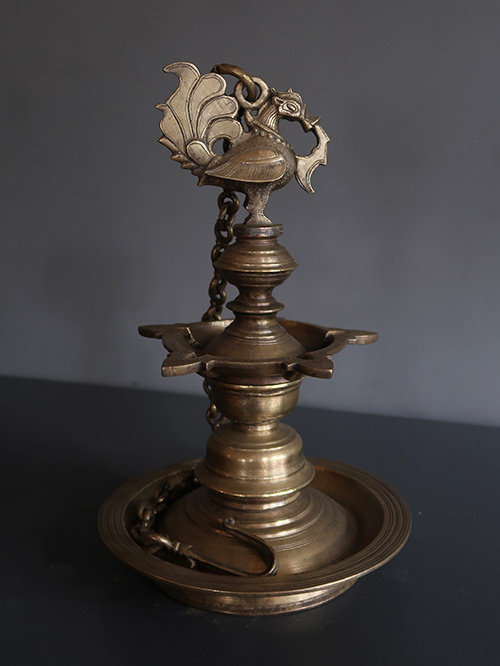
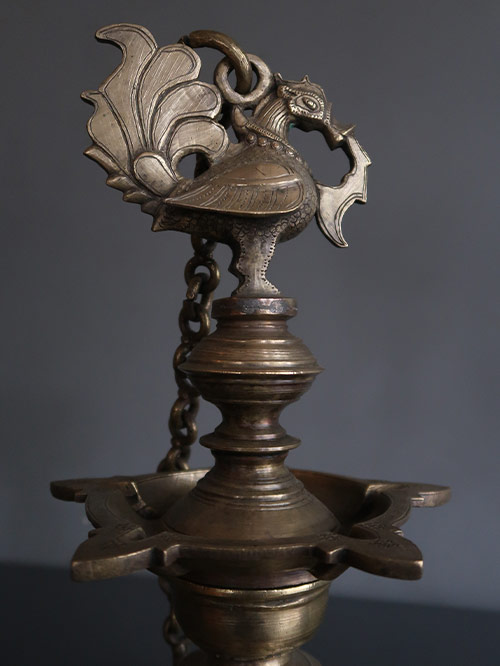
Kerala
Brass Alloy
A fine two-tiered temple lamp with a Hamsa (goose) final. The upper circular reservoir with five lotus petal shaped spouts in each of which a wick would be placed.
The Hamsa is a familiar motif in Indian art, literature, sculpture and textiles. It is an aquatic bird that resembles a goose or a swan. It is reputed to eat pearls and to be able to separate milk from water. The Hamsa is seen as a symbol of purity, detachment, divine knowledge, cosmic breath (prana) and the highest spiritual accomplishment.
Hanging lamps, sometimes called chain lamps, may have originated from as far afield as Greece or Rome, entering South Asia from the early ports of Arikamedu and Mammalapuram (both near present day Chennai). Used primarily in a temple context, the chain lamp cast its light broadly, and in so doing extended spiritual agency. Much like other lamp types, it served as a backdrop to images placed before it on the altar. A group of hanging temple lamps within the temple would have generated a tremendous play of light and shadows over walls, ceilings and floors.
Size(cms): 35 (H w/o Chain) x 21.5 (Diameter), 94 (H with Chain)
Size(inches): 13.75 (H w/0 Chain ) x 8.5 (Diameter), 37 (H with Chain)
-
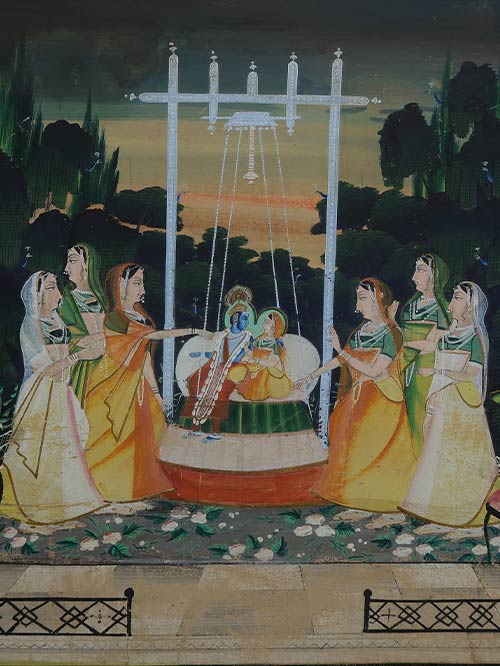
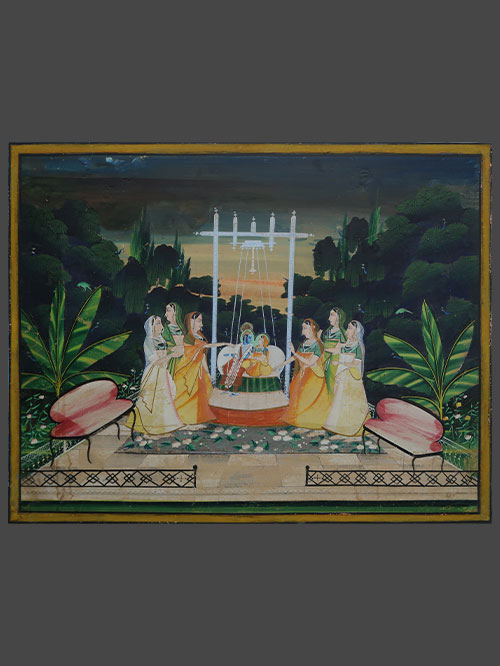
Nathdwara (Rajasthan)
opaque watercolour and gold on paper
Krishna and Radha sit resting against a large white bolster on an ornate silver swing. Underfoot is a floral decorated carpet on a chequered marble floor with iron balustrades. Six female attendants flank the nimbate couple whose gazes are firmly fixed on each other. In the foreground are a pair of European style pink settees while in the distance an orange hued sky indicates the setting sun. Dense clusters of trees and foliage sprinkled with parrots and peacocks envelope the central scene.
Such large and dramatic scenes were painted by Nathdwara artists who produced these images for devotees who visited the great Krishna temple at Nathdwara in Rajasthan. Founded in the 17th century, this temple has attracted an enormous following even to this day, in turn ensuring a continuing tradition of devotional images. The extravagant size and conception of these paintings remind one of the constant importance of religious images in India, not only as ritual objects but also items for pilgrims to acquire and bring home from the great Hindu shrines.
Towards the end of the nineteenth century and early twentieth century Nathdwara artists were exposed for the first time to European art prints whose influence can be seen in the paintings of this period.
Size Painting (cms): 44.5 (H) x 57 (W)
Size Painting (inch): 17.5 (H) x 22.4 (L)
-
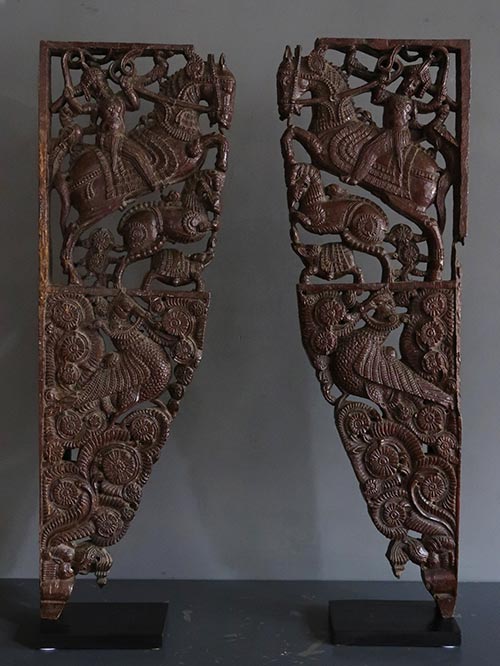
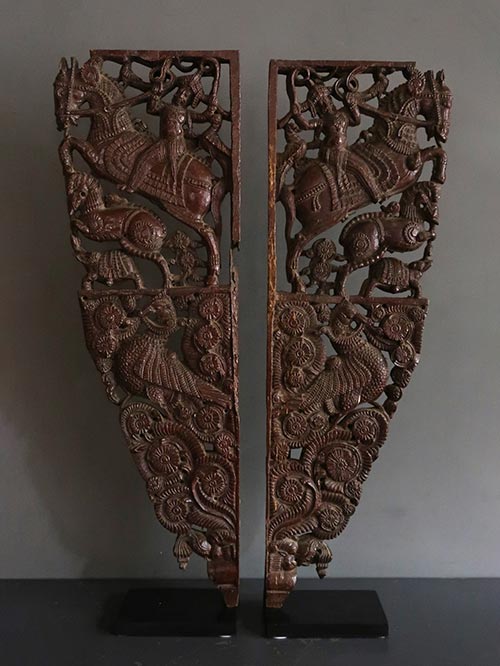
Tamil Nadu
Wood
A pair of extremely fine and large carved and pierced doorway brackets, from the entrance door of a Chettinad mansion. They depict a dense arrangement comprising elaborately caparisoned rearing horses with turbaned and ornamented riders holding whips in the upper register. The pointed turbans worn by these riders is an indication of their royal status. The raised forelegs of the horses rest on the heads of rearing Vyalis – open mouthed and with bulging eyes, who in turn are supported by the trunks of diminutive elephants. At the lower end are parrots perched vertically. The remarkable density of the composition is achieved by filling almost every available space with swirling foliage.
Size individual (cms): 96 (H) x 31 (W) x 15 (D)
Size individual (inches): 37.8 (H) x 12.2 (W) x 6 (D)







